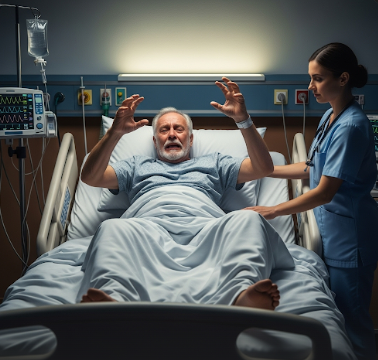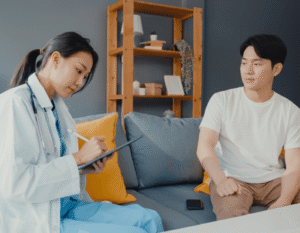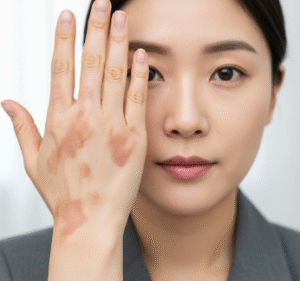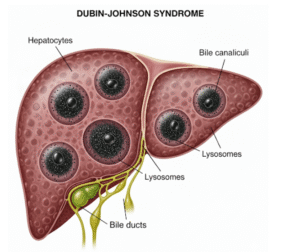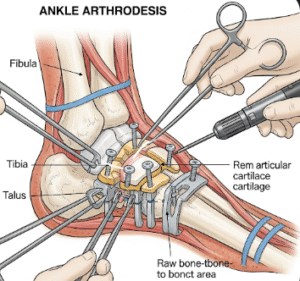Overview
Ballismus is a rare neurological movement disorder characterized by sudden, involuntary, and often violent flinging movements of the limbs. These movements typically involve the arms and legs but can sometimes affect the entire body. The disorder is closely associated with damage to specific areas of the brain, particularly the subthalamic nucleus, which plays a crucial role in regulating motor control. Ballismus can significantly impact daily activities, mobility, and overall quality of life, and it often requires comprehensive evaluation and management.
In Korea, advanced neurological clinics and hospitals offer specialized diagnostic and treatment services for movement disorders, including ballismus. Korean neurologists are known for their expertise in neuroimaging, precise diagnosis, and multidisciplinary approaches that combine medical therapy, rehabilitation, and surgical interventions when necessary. Early detection and targeted treatment are crucial to managing symptoms and preventing complications.
What is Ballismus?
Ballismus is defined as a hyperkinetic movement disorder characterized by large-amplitude, involuntary, rapid, and violent movements of the limbs. When these movements are restricted to one side of the body, it is called hemiballismus, which is the most common form. In rare cases, movements may affect both sides of the body, known as generalized ballismus.
The condition usually results from lesions in the subthalamic nucleus, a small structure in the brain that helps modulate motor activity. Damage to this area leads to a loss of inhibitory control over motor neurons, causing uncontrolled flinging movements. While ballismus can occur at any age, it is more frequently observed in adults following a stroke, head trauma, or other neurological events.
Symptoms
Symptoms of ballismus can vary in severity, from mild, intermittent flailing to intense, continuous, and violent limb movements. Key symptoms include:
- Sudden, involuntary flinging or thrashing of one or more limbs.
- Movements that are typically proximal (closer to the body’s core) and large in amplitude.
- Difficulty performing voluntary movements or maintaining posture.
- Loss of coordination and frequent dropping of objects.
- Muscle weakness in some cases due to fatigue from constant movement.
- Emotional distress or anxiety related to unpredictable movements.
In hemiballismus, symptoms usually affect only one side of the body, often opposite to the site of the brain lesion. These movements may worsen with stress or attempts at voluntary motion.
Causes
Ballismus is primarily caused by lesions or damage in the subthalamic nucleus. The most common underlying causes include:
- Stroke: Hemorrhagic or ischemic strokes affecting the subthalamic nucleus are the leading cause of hemiballismus.
- Traumatic Brain Injury: Direct injury to the basal ganglia or subthalamic area can trigger involuntary movements.
- Brain Tumors: Neoplasms that exert pressure or invade motor control areas may induce ballismus.
- Infections: Rarely, infections such as encephalitis can damage relevant neural pathways.
- Metabolic Disorders: Severe hyperglycemia or other metabolic imbalances have been associated with acute-onset hemiballismus.
- Neurodegenerative Diseases: Conditions like Huntington’s disease or Parkinson’s disease can rarely present with ballismus-like movements.
Risk Factors
Certain factors increase the likelihood of developing ballismus:
- Age: Older adults are more susceptible due to higher stroke risk.
- History of Stroke or Cardiovascular Disease: Individuals with prior cerebrovascular incidents are at higher risk.
- Trauma: Previous head injuries affecting basal ganglia regions.
- Metabolic Disorders: Poorly controlled diabetes may precipitate hemiballismus.
- Neurodegenerative Conditions: Existing motor system disorders can increase susceptibility.
Complications
Although ballismus is not life-threatening in most cases, it can lead to several complications if left untreated:
- Injuries: Violent limb movements may result in bruises, fractures, or falls.
- Mobility Limitations: Difficulty walking, standing, or performing daily tasks.
- Muscle Fatigue: Persistent flinging can lead to muscle strain and exhaustion.
- Emotional and Psychological Impact: Anxiety, depression, and social withdrawal due to loss of control over movements.
- Secondary Neurological Conditions: If caused by stroke or tumor, underlying conditions may worsen without treatment.
Prevention
Preventing ballismus primarily involves addressing its underlying causes:
- Stroke Prevention: Maintain healthy blood pressure, cholesterol, and blood sugar levels. Adopt a balanced diet, exercise regularly, and avoid smoking.
- Head Injury Prevention: Use seat belts, helmets, and safety measures during sports or high-risk activities.
- Control of Metabolic Disorders: Proper management of diabetes and other metabolic conditions.
- Regular Medical Check-ups: Early detection of brain lesions or vascular issues through neuroimaging and neurological exams.
Treatment Options in Korea
Korea offers state-of-the-art medical care for neurological disorders, including ballismus. Treatment is typically tailored to the severity, underlying cause, and patient needs.
1. Diagnosis:
- Neurological Examination: Assessment of limb movements, coordination, and reflexes.
- Imaging Tests: MRI or CT scans to detect lesions in the subthalamic nucleus or basal ganglia.
- Blood Tests: To rule out metabolic causes such as hyperglycemia.
2. Medical Treatments:
- Dopamine-Depleting Medications: Drugs like tetrabenazine help reduce involuntary movements.
- Neuroleptics: Certain antipsychotic medications can suppress hyperkinetic symptoms.
- Benzodiazepines: Sometimes prescribed for symptom relief and anxiety reduction.
3. Surgical or Advanced Therapies:
- Deep Brain Stimulation (DBS): In severe, drug-resistant cases, DBS targeting the subthalamic nucleus can modulate abnormal brain signals.
- Lesion Surgery: Rarely, selective lesioning may be considered for refractory hemiballismus.
4. Rehabilitation and Support:
- Physical Therapy: Exercises to improve coordination, balance, and muscle strength.
- Occupational Therapy: Adaptation techniques to perform daily activities safely.
- Psychological Support: Counseling and stress management strategies to cope with anxiety and social impact.

